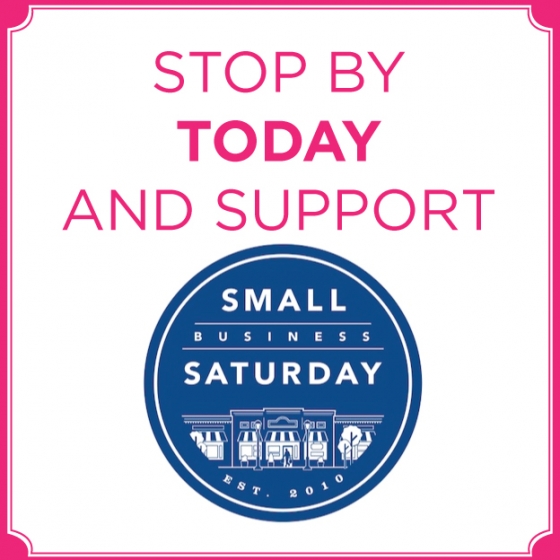Marketing to new customers simply means inviting customers to your store. Your goal is to look at the investments (time, money, focus) you make to have the highest return possible. In the journey from “I never knew your store was here” to “I tell everyone how great your store is,” the first step is awareness. Make sure your potential customers are aware of your store and remember it when they buy what you sell. Consistent messaging and repetition are two important strategies for helping people remember your store.
Guide to New Marketing Success
Know Who You Are
Know your clear point of differentiation and stick to it. For Walmart, it’s low prices. For Amazon, it’s convenience &and selection. What’s your point of differentiation? Handcrafted gifts? Deep local knowledge? Trend setting? Coastal living? Country roots? You must know what you stand for and repeat it in every touchpoint with your potential customer. You may grow sick of the same tagline because you hear it every day. But your potential customers probably hear it once or twice a year. Don’t change up your messages. (For example, don’t pitch “friendly expertise” one month and “low price in town” the next.) Stay on message all the time.
Marketing creates a promise. Your store promises customers that they’ll find unique gifts, low prices, or friendly service or something else that your website or store will always provide.
Marketing isn’t advertising. It’s every message to your potential customers about your store or website. It must be consistent. The promise radiates from your store’s strategy. In brick and mortar, it’s everything from awnings to shopping bags. Online, each touchpoint tells visitors about your promise and your products.
Marketing must reflect your store’s personality; fun, quirky, sophisticated, or lavish, for example. Your store’s personality comes across in the logo, tagline, colors, font, words, and people your customers see. And, while your store’s strategy should be timeless, marketing campaigns can (and should) change. Thus, a luxury brand can run a price-driven clearance campaign.

Know Who Your Customers Are
Marketing starts a conversation with your ideal customer. To succeed, have a very clear vision of your specific ideal customer — your target market. Spend the time to define your ideal customer so you spend your money effectively. Is she a busy mom? A wealthy retiree? Does she hunt? Attend church? Support environmental political rallies? Does your ideal customer make purchases for herself or her home or as gifts? Is she new to town or a third-generation native? Creating the ideal target customer profile helps in every aspect of marketing: The media to use, the words to say, the photos to include, the price points. An ineffective marketer says, “everyone is my target.”
Here are some ideas to help you get started.
| If your target market is: | Connect with them through: |
| Out of towners & tourists | Hotel welcome materials Printed and online visitor guides TripAdvisor.com recommendations Annual city events Email offers Social media, especially Pinterest ads Tie-ins, such as shopping guides, pub crawls, sip and shop events |
| Busy Moms | School fairs and PTA events Youth sports sponsorships and fundraisers Scouting events Church bulletins Social media, especially Pinterest ads Tie-ins, such as girls night out, sip and shop events, holiday events |
| Retirees | Church bulletins Golf, fishing, hunting, bowling events Newspaper and radio ads Direct mail offers Email campaigns and offers AARP discounts, AAA discounts Social media, especially Facebook ads Tie-ins, such as pet events |
| Millennials | Local brewery events Coffee Shops Text offers New product preview events Social media, especially Instagram ads Tie-ins, such as pet events, 5Ks, pub crawls |
Make an Offer They Can’t Refuse
Your marketing messages need to motivate people to such a degree that they take action. It has to get them off the coach and to your site or store. Don’t worry if prospective customers scan your website to compare prices or read customer reviews. Isn’t it great to be in their consideration set? Don’t worry if a coupon could be used on clearance product, making it sell below cost. Chances are they’ll buy other things because of your team’s customer service. Those are small items in the broader scale of marketing to your customer. Your first order of business is to give customers a reason to come to your store or website. Stay true to your brand promise in every marketing campaign and your target market will respond.
Ideas for activating your target market:
Selection
- Promote unique items that can’t be found anywhere else in the market
- Promote items that are brand-new to the market (first adopters love this)
- Promote items that are leading a trend (fashion and décor)
- Promote seasonal items
- Promote limited-quantity items
Service/Experience
- Offer value-added services for new customers (free consultations, designs, customization, personal shopper)
- Offer free advice (on-site design, seminars, online self-evaluations like style-finders)
Pricing
- Offer a deep discount only available to first-time customers
- Offer a discount for current customers when they bring in a new customer (offer a customer-referral code)
- Honor a competitor’s coupon when a customer makes their first purchase
- Offer a full-service solution when a first-time customer buys the core item, such as free scented wax granules when the customer buys the warmer, or half-off framing when the customer buys a print.
Pricing is listed last because your first goal should be to get potential customers to your store or site based on what they’ll purchase or experience before price. But to be fair, pricing is the easiest way to motivate a new buyer. Once they interact with your brand, however, they must have a tremendous customer experience to return.
There are three pathways to get your offers in front of your target market: personal communication, traditional channels, and social media. Too many store teams overlook the power of a face-to-face interaction. Attend the same local events as your target market. Create a natural way to describe what you do that is not what your store sells. So, when someone asks, “What do you do?” Instead of saying “I manage a gift store,” think about your customers not the products you sell. You could say “I help people hang onto their memories.” See the difference? Always invite people to come to your store and hand out cards with a “10% off manager special” offer on them.
An effective networking path is to select a half dozen stores you admire. Ask for a meeting with the store manager (bring coffee!) and simply tell them what you like about their store and why. Ask them what they think makes them so successful. Listen to their answers. Chances are you can learn something you didn’t know about the secret to their success. Listen more than you talk. But tell them about what you think you do well in your own store and the kinds of customers you wish to attract. Be genuine. Look for places where you can each other succeed, perhaps in joint promotions or bounce-back offers?
Create a strategy for networking that will either bring you closer to your target market or that can put you in touch with people who influence your target market. Traditional channels can be everything from direct mails offers to radio to websites. (Yes, those are traditional now. At the very least you must have a Google business page.) Social media will be the focus in the July 2020 issue of Smart Retailer.
Getting new people in the door is the lifeblood of every store or website. With a clear focus on who you are, who your target market is, and powerful offers, you can attract people to your store or site every day.
More from Flora
Resources
Free Price Change Calculator Click Here
Free Annual Social Media Calendar for Gift Shops Click Here
Get a Free Chapter of Flora’s Book Here
Articles
How to Determine a New Customer Acquisition Budget
Conducting an RFM Analysis (Recency, Frequency, Monetary Value)
Delegating by Using the Training Triangle
What To Do When Customers Complain Online
4 Customer Service Benefits for Your Employees
Finding Good Employees for Gift Shops









